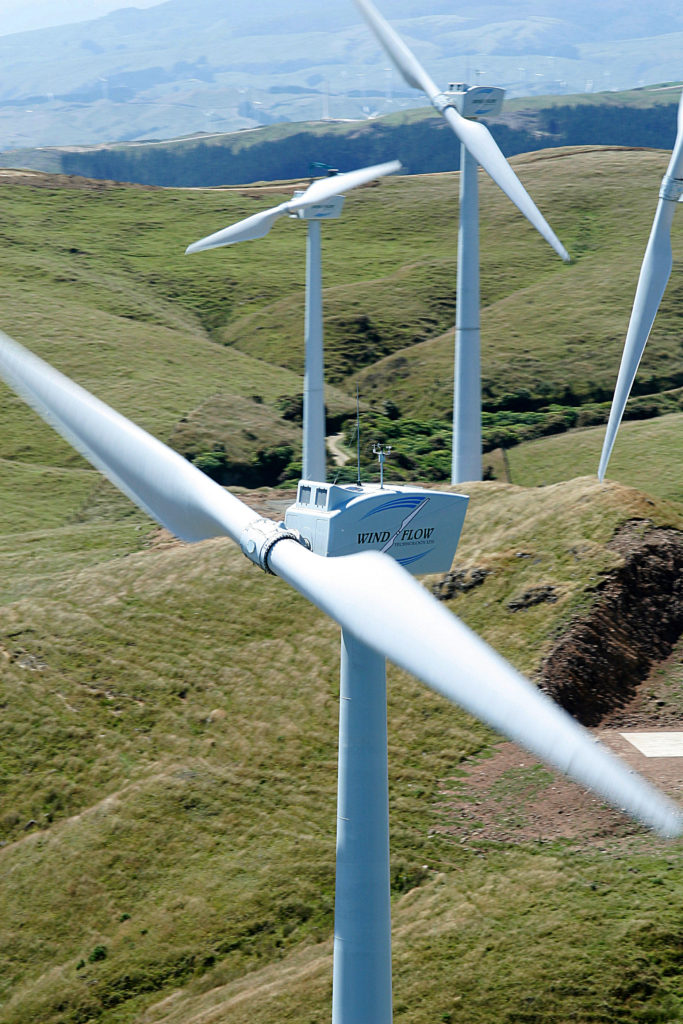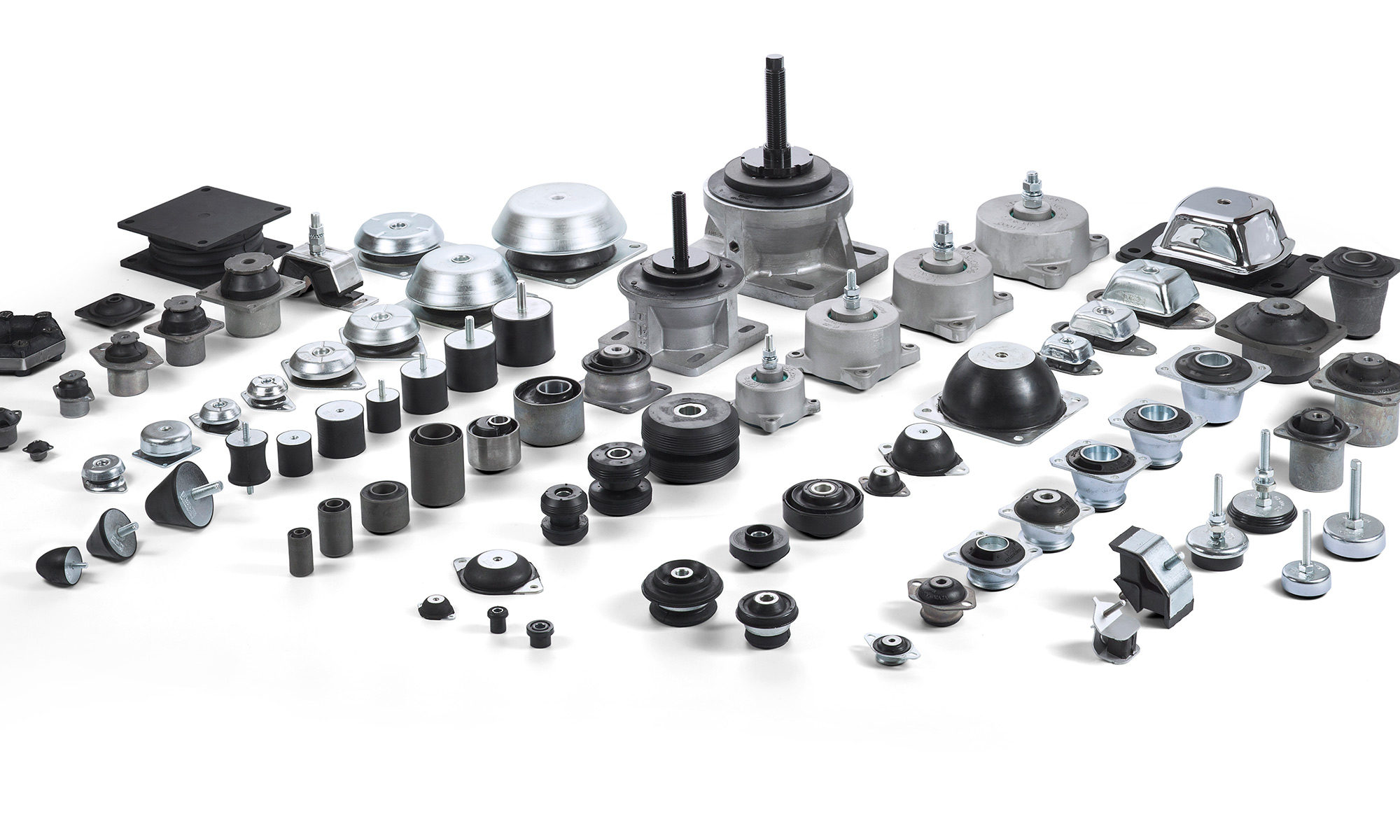Trelleborg IAVS suspension components help lower noise produced by wind turbines.

Images by Gary Rodgers / Magnum Images
Trelleborg Industrial AVS has been supplying anti-vibration bearings to the wind energy sector ever since the 1990’s. One of the first applications was at Cemmaes in Powys, mid Wales in 1992, where Wind Energy Group Ltd. (WEG) built 24 turbines for National Wind Power, making it the largest UK wind farm to use British machinery at that time. The WEG MS-3 turbines were equipped with 33m diameter wood epoxy composite blades rotating at 48rpm on a 25m steel tower and generating up to 400KW.
Some of the earlier wind turbines attracted considerable criticism on the grounds of noise, so WEG paid particular attention to acoustic isolation in the design of the MS-3. The main noise attenuation feature was a Metalastik ® Spherilastik “teeter”bearing from Trelleborg Industrial AVS, which allowed the rotor blade to tilt on its hub, counteracting the see-sawing motion caused by gusting wind. In addition to acting as a resilient spherical joint, the compact, precisely formulated rubber/metal component also keeps noise and vibration to a minimum. Spherilastik bearings are designed for un-lubricated, maintenance-free operation and are typically used in rail, road and off-road vehicles, hydraulic damper fixings and other applications where a high duty bearing of compact size is required.
Two years later Trelleborg Industrial AVS developed a more complex isolation system for the wind farm at Blyth in Northumberland, the first in the UK to be sited in a harbour. In this case, the computer-controlled 300kW turbines were supplied by the Belgian company Windmaster. The Trelleborg suspension system was installed in the three turbines closest to the town two years after it opened in order to bring overall noise levels within the environmentally acceptable norms specified by the contract.The package consisted of four Spherilastik and a number of large Metalastik® Cushyfloats for each of the three turbines.Measurements showed that this mounting system achieved a reduction of 4 dBA in structure-borne noise.
Since these early installations, the company’s anti-vibration technology has won wide international acceptance in the wind energy industry.From the mid-1990s the volume of export contracts has grown steadily.An early example, was the technology exchange between WEG and the Kirloskar Electric Company of Bangalore, India, which saw the introduction of the first TIAVS rubber/metal bearings into wind farms on the sub-continent.The most recent example is Trelleborg’s collaboration with Windflow Technology of Christchurch, N Z, which again is using Spherilastik bearings for its Windflow 500 wind turbines, designed and manufactured in New Zealand.
The Windflow 500 design is almost unique in the world of wind power, featuring, as it does, two blades rather than the more conventional three-bladed solution.In addition to being inherently lighter and more economic to manufacture and install, two blades enable the unit to teeter, which is important as it reduces the bending forces on the turbine shaft, gearbox, tower and foundations.As a result, all of these elements can be lighter and less expensive too.The rotor of the Windflow 500 turbine is designed to teeter up to 6 degrees on either side of the normal plane of rotation in response to varying wind forces.In addition, the Windflow 500 is a medium-sized design, measuring 47m from the tower baseto the blade tip, less than a third the height of some of the larger three-bladed turbines.This dramatically reduces the environmental impact, making it much more acceptable to planners and to neighbouring communities.
As usual, the Trelleborg bearings form part of the pitch-teeter coupling mechanism in the hub of the Windflow turbine.The two-bladed rotor is mounted on a hinge, allowing it to teeter back and forth slightly as it rotates.The mechanical pitch coupling permits passive pitch movement and changes the natural frequency of teetering, away from resonance, so minimizing teeter restraint loads.
Along with this pitch teeter coupling feature, Windflow utilizes a patented, torque-limiting gearbox incorporating a narrow band variable speed system.This, together with full blade pitch control, allows the use of a synchronous generator, coupled directly on line – a first for the wind industry.The Windflow 500 can therefore be connected easily into the electrical grid, as grid compliance codes have been designed around the capability of this generator.
The application of these two weight-saving technologies makes the turbine more cost-effective than comparable three-bladed designs.The rotor and gearbox are also very robust so they can generate more energy in windy conditions and are designed to last for at least 20 years.
Trelleborg’s Spherilastik bearings act as a resilient spherical joint, providing articulation and allowing the rotor hinge mechanism to pivot, while also suppressing noise and vibration.
The first five production turbines have been performing extremely well at the Te Rere Hau wind farm near Palmerston North – an area that experiences some of the strongest winds in the world.Windflow Technology is currently building a further batch of fourteen turbines for this 97-turbine wind farm and plans to build over 60 turbines per year from 2008, predominantly for the New Zealand market and Pacific Rim countries such as Australia and USA.

